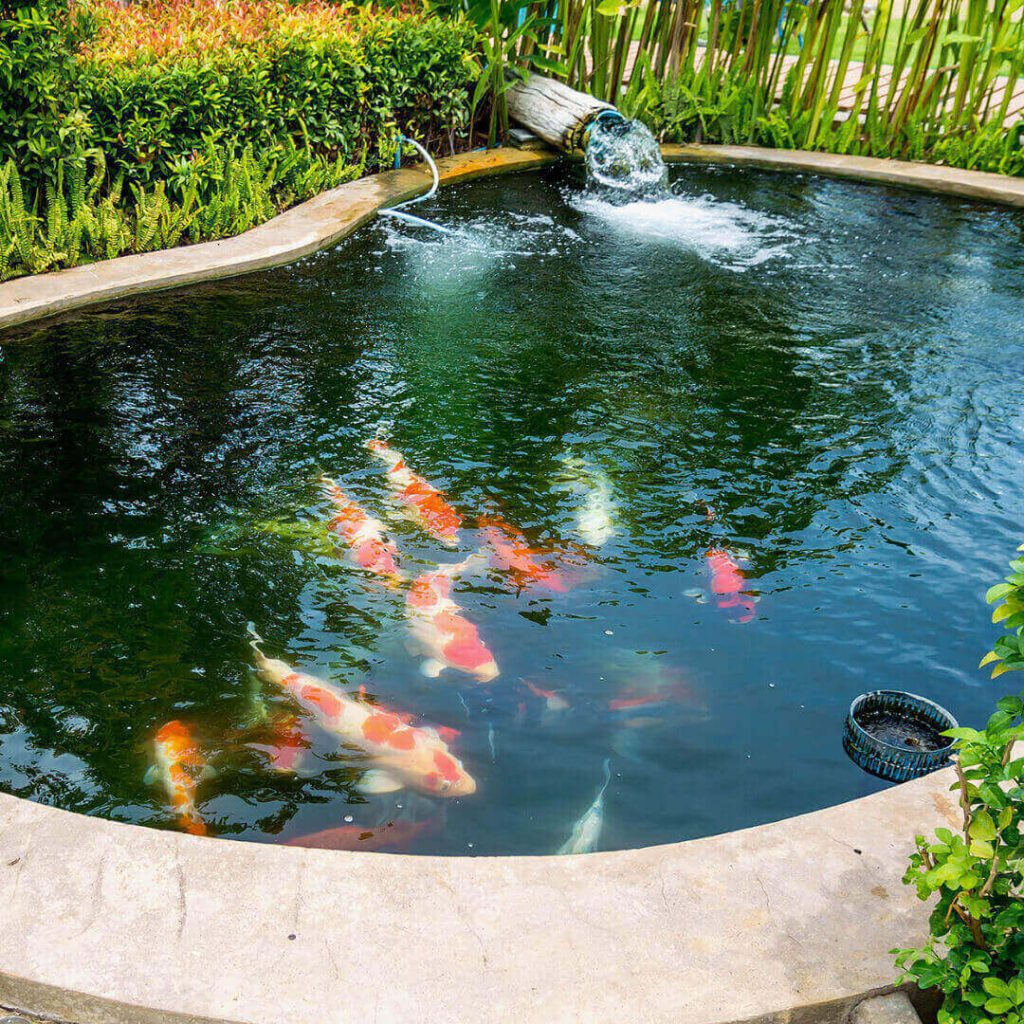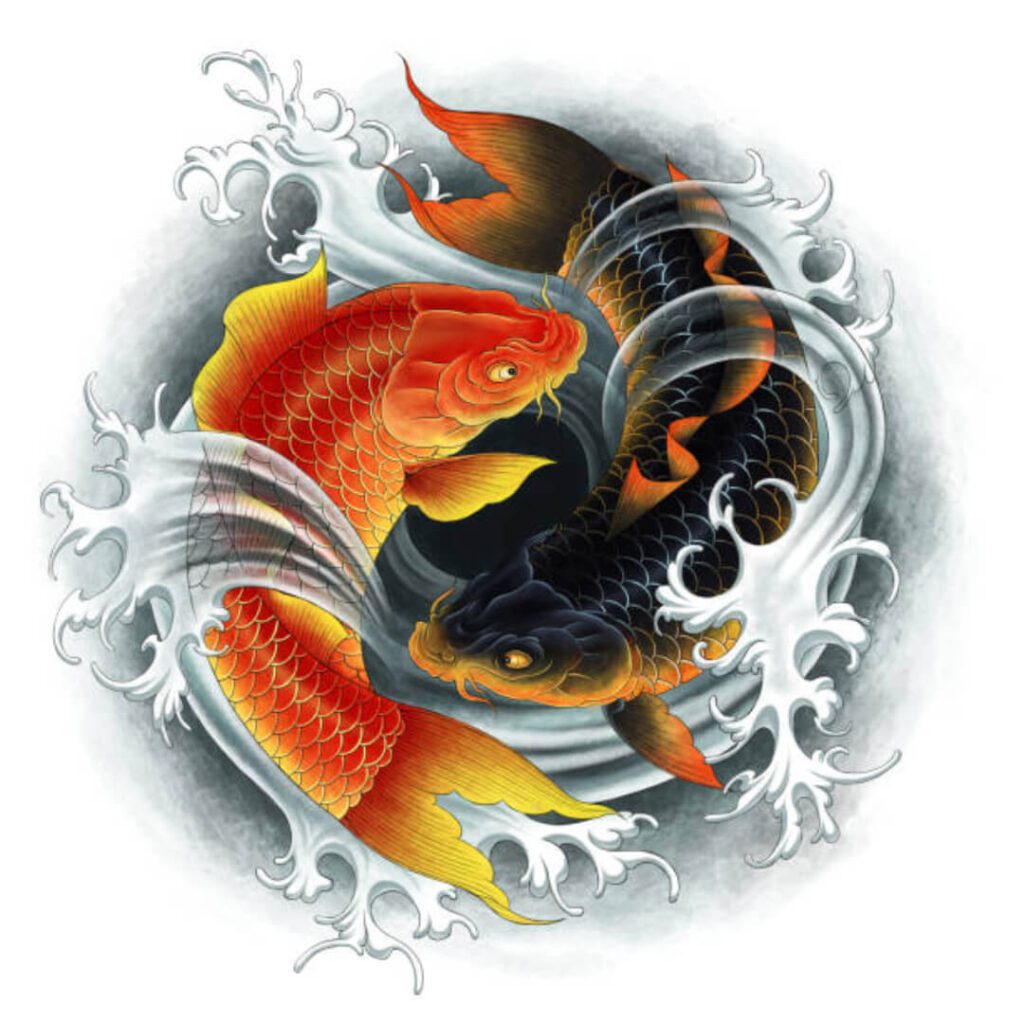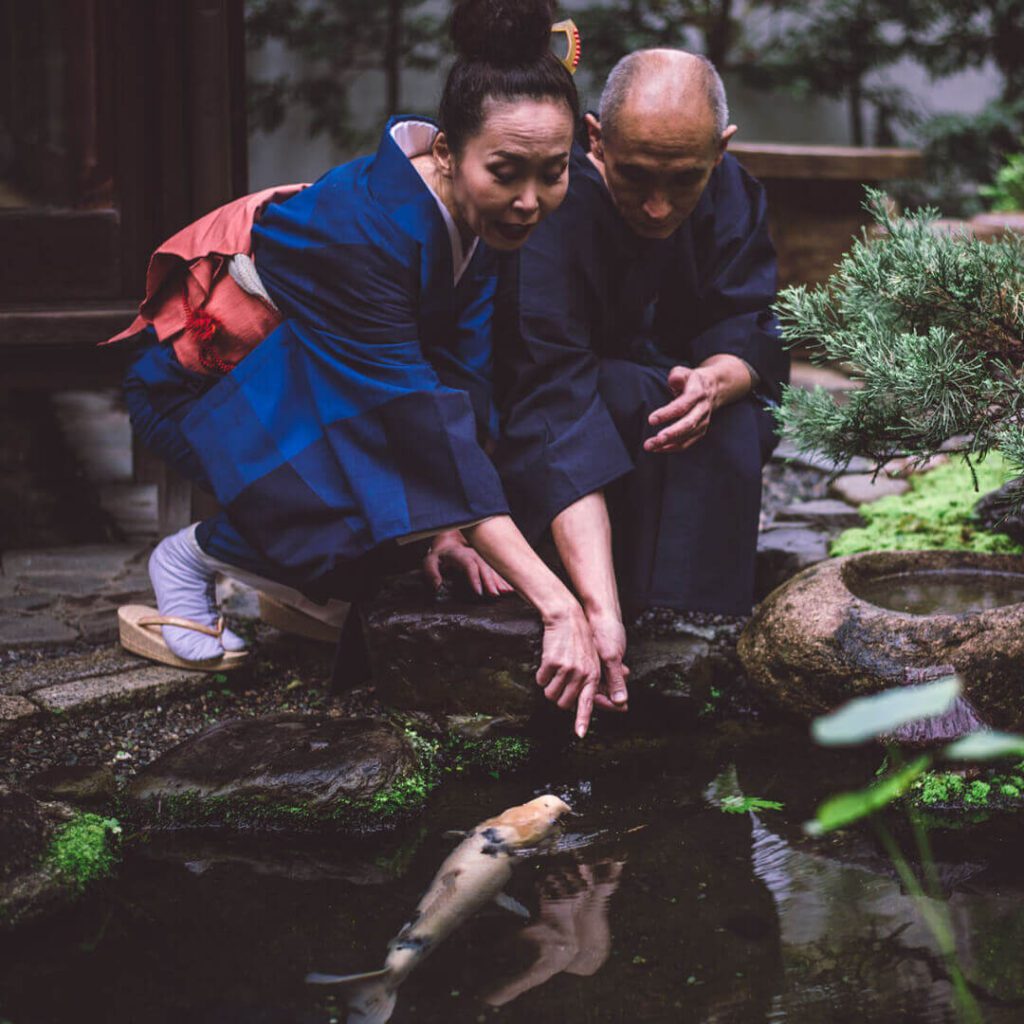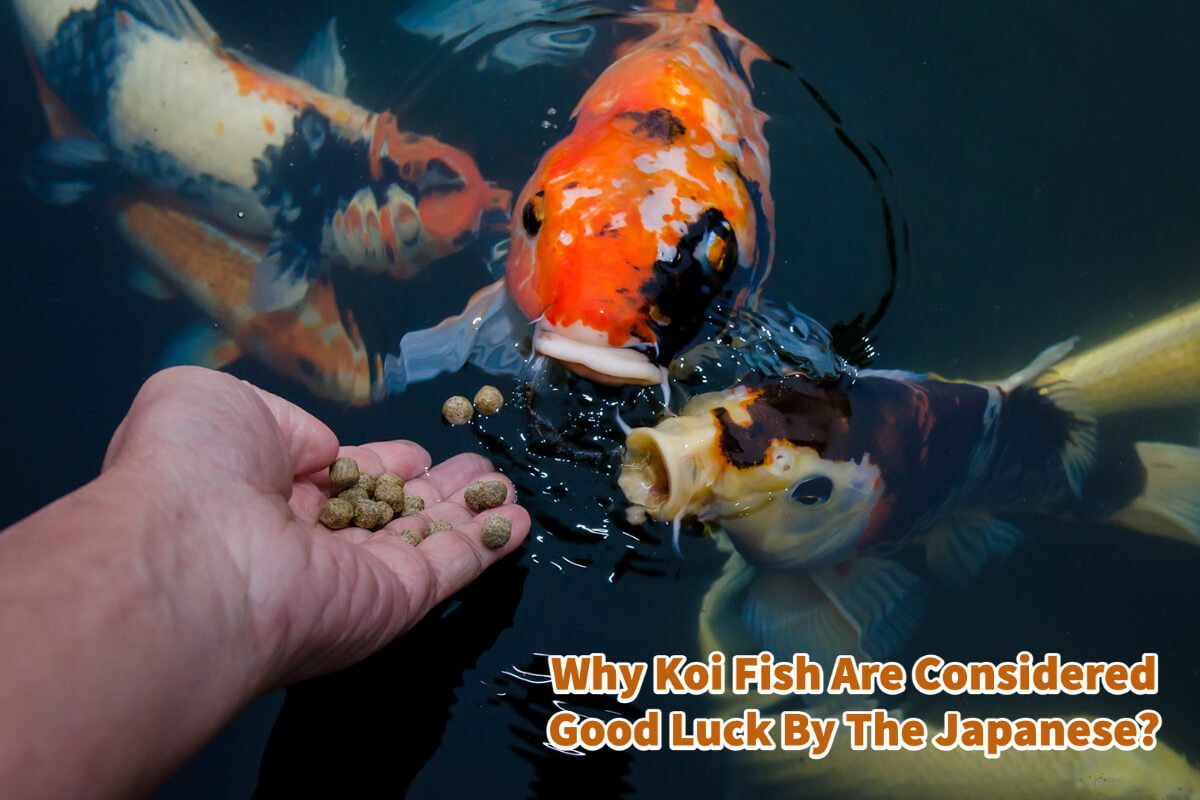Koi fish are a beloved symbol in Japanese culture and have long been considered a symbol of good luck and prosperity.
There are many reasons why Koi Fish are considered to be good luck symbols by the Japanese. One is because they are known to bring good luck and be able to swim upstream. Another is that they are held in high regard in Japanese culture.
Table of Contents
- The Origin Of Koi Fish In Japan And Why They Bring Luck
- Japanese Koi Fish As A Symbol Of Good Luck
- Other Lucky Symbols Associated With Japanese Koi Fish
- Japanese Yin-Yang Koi Fish Symbol Meaning
- Why Japanese Culture Loves Koi Fish
- Related Questions
The Origin Of Koi Fish In Japan And Why They Bring Luck
Koi fish were first introduced to Japan in the 1820s, and they quickly became famous for ornamental purposes. Wealthy landowners initially kept koi fish as a status symbol, but they soon became popular among the general population.
They are considered to be carp fish but are considered to be domesticated carp. They originated back in China as far back as the 4th Century.
Koi Fish were initially bred for their taste and as a source of protein by Japanese rice farmers during the 1820s. However, over time, the farmers noticed that some of the Koi Fish had unique and striking color patterns, and they started to breed them for these desirable traits and colors.

Selectively breeding Koi Fish for their color and patterns became known as “Nishikigoi” or “brocaded carp,” It quickly became popular among Japanese farmers and aristocrats. In fact, by the early 20th Century, Koi breeding had become a national pastime in Japan.
Through careful breeding and selection, Koi Fish was developed with various colors and patterns, including red, white, black, and yellow. Some of the most popular patterns included Kohaku (white with red markings), Taisho Sanke (white with red and black markings), and Showa Sanke (black with white and red markings).
Today, Koi Fish are highly valued for their beauty and are often kept as ornamental fish in outdoor ponds and gardens. The practice of breeding Koi Fish for their color and patterns has continued to evolve, with breeders worldwide working to create new and unique varieties of these magnificent fish.
So important are these fish to the Japanese culture that koi fish are considered a symbol of good luck.
Japanese Koi Fish As A Symbol Of Good Luck
Koi fish have long been considered a symbol of good luck in Japanese culture. One of the reasons for this is the way that koi fish swim upstream.
In Japan, the image of a koi fish swimming upstream is seen as a symbol of determination and perseverance. This image is often used to metaphorize human struggles and the need to keep moving forward in adversity.

Another reason koi fish are considered lucky in Japan is their beautiful coloration. Koi fish come in a wide variety of colors and patterns, and these colors are often associated with different aspects of good luck.
For example, a red and white koi fish is said to bring good luck in love and relationships, while a black koi fish is said to bring good luck in business and financial matters.
So that is why people will often have specific colors of Koi fish in their ponds, as the color of the fish is also a symbol of luck.

Listen To Our Podcast About Koi Fish And Japanese Culture: Unpacking The Mysteries Of Good Luck by clicking here.
Other Lucky Symbols Associated With Japanese Koi Fish
There are many lucky symbols associated with koi fish in Japanese culture. One of the most popular is the yin-yang pair of koi fish.
Japanese Yin-Yang Koi Fish Symbol Meaning
In the Yin- Yang one koi fish is swimming upstream while the other is swimming downstream. This image represents the balance of opposites and is often used to symbolize balance and harmony in relationships.

When the Koi Fish is depicted within the yin-yang symbol, it represents the balance and harmony of opposing forces. The Koi’s bright and colorful appearance contrasts with the black and white of the yin-yang symbol, emphasizing that opposites can exist in harmony.
In a marriage relationship, they often use this yin-yang symbol to show the opposite can coexist. One person in a relationship can be the yin and the other yang and the two different people can coexist happily in a relationship.
Perseverance And Determination As A Symbol Of Koi Fish
Koi Fish are known for their ability to swim upstream and overcome obstacles, and they are seen as a symbol of perseverance, determination, and strength. In Japan the Koi Fish represents overcoming challenges and achieving success through hard work and perseverance.
Good Fortune And Prosperity – A Symbol Of Japanese Koi Fish
The Koi Fish is also associated with good fortune and prosperity in Japan. Legend has it that if a Koi Fish can swim upstream and reach the top of a waterfall, it will transform into a dragon and bring good fortune and abundance to its owner. Therefore, the Japanese Dragon Koi Fish is often depicted in art and as a tattoo design to attract good fortune and prosperity.

Masculinity And Power And The Japanese Koi Fish
The Koi Fish, also known as the Dragon Koi Fish, is often associated with masculinity and is a popular tattoo design among men. The combination of the Koi Fish’s perseverance and the dragon’s strength and power makes it a symbol of masculine energy and dominance.
Love And Romance And The Japanese Koi Fish
In some Japanese legends, the Koi Fish represents love and romance. Legend has it that a Koi Fish that can reach the top of a waterfall will transform into a dragon and marry a princess. Therefore, the Japanese Dragon Koi Fish can also symbolize love and romance.
The Japanese Koi Fish is a powerful and highly revered symbol in Japanese culture that represents perseverance, determination, strength, good fortune, prosperity, masculinity, power, and even love and romance; it shows the ability to swim upstream and overcome obstacles. The koi fish are seen as a symbol of perseverance, determination, and strength.
Why Japanese Culture Loves Koi Fish
Koi fish are beloved in Japanese culture for many reasons. One of the reasons is their beauty.
Koi fish are highly prized for their coloration and patterns and are often bred for specific colors and patterns. In addition, koi fish are highly social animals, and they are known for their complex social behaviors. This makes them famous for ornamental ponds, where they can be observed and appreciated.

Another reason why koi fish are beloved in Japanese culture is their symbolism. Koi fish are associated with many positive aspects of life, including good luck, perseverance, romance, and determination. This makes them a popular choice for art and design, and they are often used as a motif in everything from clothing to home decor.
This is also why you will see a pond of Koi fish in many parts of Asia such as at factories, apartment buildings, or office buildings. I have seen many factories in Asia that will have a Koi fish ponds inside or outside their factory.
Japanese culture has long considered the koi fish a symbol of good luck and prosperity. The image of a koi fish swimming upstream is a powerful symbol of determination and perseverance, and the beautiful coloration of koi fish is often associated with different aspects of good luck.
Koi fish are also beloved in Asian culture for their beauty and complex social behaviors, making them a popular choice for ornamental ponds and as a motif in art and design.
At A Bus On A Dusty Road, we talk about history, travel, life, sailing, and ex-pat living. We are all about “Living Life As A Global Citizen.” We explore social, cultural, and economic issues and travel.
We would love to have you be part of our community. Sign up for our newsletter to keep up-to-date by clicking here. If you have any questions, please contact me, Anita, by clicking here.
Listen to our Podcast called Dusty Roads. You can find it on all major podcast platforms. Try out listening to one of our podcasts by clicking here.
Subscribe to our A Bus On A Dusty Road YouTube Channel with great videos and information by clicking here.
Related Questions
How Long Did It Take to Build the Whole Great Wall of China?
The Great Wall of China took over 2,000 years to build. The building spans many Chinese Dynasties for about 22 centuries. The construction of the wall ended in the Ming Dynasty in 1644. The Great Wall is one of the largest human-made construction projects globally; the Great Wall is over 21,196 kilometers or 13,171 miles. There are over 25,000 watchtowers scattered throughout the Great Wall structure.
You can read more about How Long Did It Take to Build the Whole Great Wall of China? by clicking here.
What Is The Meaning Of Koi Fish To The Japanese Culture?
In Japan, the koi fish symbolizes luck, prosperity, good fortune, strength, perseverance – everything good. The Koi fish symbol is very closely associated with the Japanese cultural identity. The word ‘Koi” is a Japanese word that means carp fish.
By clicking here, you can discover What Is The Meaning Of Koi Fish To The Japanese Culture?.
Koi Fish Symbolism And Meaning Defined
The Koi fish have many symbols, from their color to the fish. The fish can bring you positive energy, good luck, and fortune. That is why the Koi fish remains prevalent in Asia and worldwide. Koi fish symbolism and lore have a long history in Japanese culture and remain relevant today.
By clicking here, you can discover Koi Fish Symbolism And Meaning Defined.

